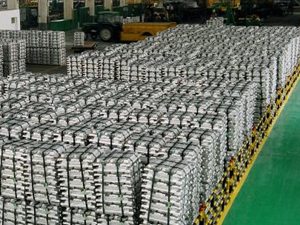
[miningmx.com] – ESKOM pays more to BHP Billiton for the coal needed
to generate one kilowatt of electricity than Melbourne-headquartered mining group
pays per kilowatt for electricity to its aluminium smelters.
This was revealed in research that Sake24 had done about the effects of the
controversial contract whereby Eskom provides electricity to Billiton’s aluminium
smelters at a ridiculously low price.
The research, conducted by ENF Consulting, became possible after Media24
and Sake24 won a long court battle to get the formula used for calculating
the price of electricity for the smelters.
A comparison of the rates that Billiton pays Eskom for the 2,000MW of current that
aluminium smelters use and Eskom’s unit costs for coal, which in Eskom’s terms is
known as primary energy, shows most clearly how great the burden of the aluminium
smelters has become for Eskom, and therefore the whole country.
It also shows that for years the rate for the aluminium smelters has not even covered
the cost of the primary energy, which is mainly coal.
(The South African smeltesr and the Mozal smelter in Maputo together use about 9%
of the total electricity generated by Eskom.)
BHP Billiton mines between 32 million tonnes a year (Mtpa) and 34Mtpa of coal of
power-station quality per year in South Africa. It sells between 18Mtpa and 20Mtpa of
that to Eskom per year – which is about 18% of the 125Mt of coal burned by Eskom
every year.
BHP Billiton’s 18Mtpa is delivered to the Kendal and Duvha power stations in
Mpumalanga. The rest is exported through the Richards Bay coal terminal (RBCT).
However, the price of coal has risen sharply since 2008 – mainly because coal prices
on world markets rose sharply. This stems from the demand in Asia, mainly in India,
where many new coal-fired power stations have come into operation during the past
five years. India, for example, bought less than 10% of the coal from Richards Bay
five years ago, but now it’s more than 50%.
Eskom is to some extent hedged against the market price with its so-called cost-plus
contracts that were signed with coal mines at the time the mines and power stations
were being built. The contracts fix the price at the cost price for the operation of the
mine plus an agreed percentage, usually 2% to 3%.
However, coal in terms of these contracts is becoming less and less, because of the
age of the mines, which are becoming depleted. Therefore Eskom’s primary energy
cost over the past four years has increased by around 25% per year from R23.7bn in
2009 to R36.6bn last year.
However, BHP Billiton’s three large coal mines are not bound by such contracts.
In the coming years, the carbon tax must be introduced, which will probably add
about R4bn per year to Eskom’s energy costs.
Therefore it is not unrealistic to expect that Eskom’s primary energy cost will rise by
15% per year in the coming years; in fact, this is a conservative estimate, because
Eskom will also have to buy more renewable (“clean’) energy from private
generators. The initial cost of these is enormous.









